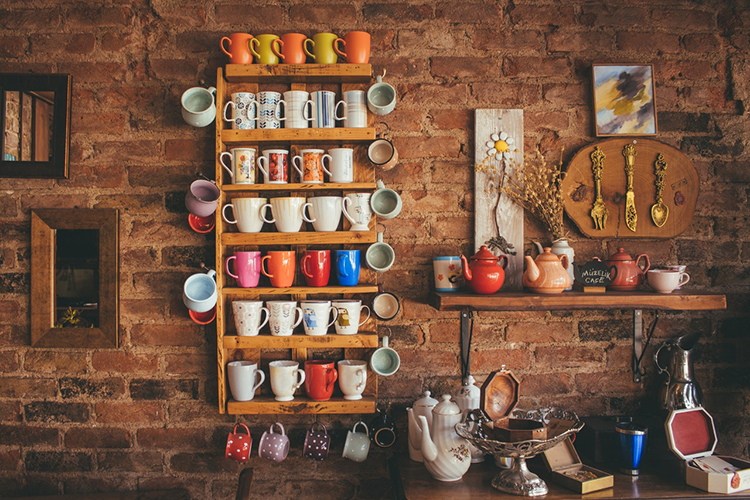7 photography editing styles
With digital image editing, it is faster and easier than ever to give photos a special look.
Apps like Instagram, VSCO, Snapseed, etc. are equipped with a variety of preset filters. For image editing programs such as Adobe Lightroom or Photoshop, there are countless so-called presets available with default settings for a variety styles. These filters and templates are easy to apply to any photo.
For high-quality photo editing, however, much more is important than just applying filters. Lighting conditions, camera setting, subject … the perfect post-processing settings for a specific look vary from picture to picture. For best results, post-processing and retouching always require the fine-tuning of all adjustments. In order to create a particular look and to give it an individual touch at the same time.
We present seven popular editing styles and their impressive results.
Retro/Vintage Style
Picture, like from another age. The main feature of this look are the accentuated red, blue, yellow and green tones, which appear particularly rich. Soft and warm light determines the images. In some cases, a slight overexposure, blur, lens flare and/or noise is added. This style is often combined with the muted colours style.

Muted Colours Style
Instead of intense and bright, the colours in this style are rather toned down. By desaturating the colours, they appear faded and slightly washed out. To ensure that the image does not look too grey, it is important to not completely remove the colour saturation. A uniform desaturation affects all colours in the picture equally. Selective colour editing isolates the effect to specific colours and areas and is adjusted individually.

Black-and-White Style
This look removes any colour of an image. What remains are the colours black and white in different levels of brightness. It is not just about simply converting a coloured image into black and white. Only the fine-tuning of brightness, contrast and the colour curves, brings the desired outcome with all the details. Depending on the editing, the black-and-white style achieves very different results. From soft shadows and highlights to strong contrasts.

Monochrome Style
Monochrome means one colour. This style turn an image into one with just one colour and the different shades of that colour. The colour shades result from the lighting and reflect the various shadows and highlights of the image. Dark colours or pastel shades. Depending on the desired mood of the picture, each colour is suitable for this look and is edited individually.

Coloured High Contrast Style
This style stands out for its striking colours. The goal is to make the colours of an image stand out as much as the subject itself. A high colour saturation gives the images a movie-like look. But we see this style also often with desaturated colours. The end result should not look overexposed or oversaturated. Instead of just changing the brightness and contrast of the whole image, many adjustments are made directly using for example the colour curves.

Dark & Moody Style
Dark with atmospheric light accents. This style stands for a string contrast between light and dark and fascinating, sometimes dramatic image moods. Rich colours, intensified contrasts and the emphasised contrast between shadows and lights characterise the look. The selective editing of individual areas and elements pushes them to the foreground. The careful fine-tuning of all settings ensures that skin tones and lights do not look unnatural.

Light & Airy Style
Soft contrasts, warm highlights and a natural lighting result in bright, fresh and “light” images with this look. The counterpart to Dark & Moody is reminiscent of traditional film photography. A slight overexposure increases the brightness of white and colours. Lightened shadows give the image an overall soft look. The fine-tuning of contrasts and colour saturation ensures that details do not get lost and the picture does not look too washed out.

More about current image trends can be found in our blog post about the visual trends 2019.
- 2023
- January (1)
- 2022
- December (2)
- November (1)
- October (2)
- September (2)
- August (1)
- July (1)
- June (1)
- May (1)
- April (1)
- March (1)
- February (1)
- January (3)
- 2021
- December (2)
- November (1)
- October (3)
- September (2)
- August (1)
- July (3)
- June (1)
- May (2)
- April (1)
- March (1)
- February (2)
- January (4)
- 2020
- December (2)
- November (3)
- October (4)
- September (1)
- August (2)
- July (1)
- June (2)
- May (3)
- April (3)
- March (3)
- February (4)
- January (4)
- 2019
- December (1)
- November (2)
- October (5)
- September (1)
- August (3)
- July (2)
- June (2)
- May (3)
- April (2)
- March (3)
- February (2)
- January (4)
- 2018
- December (2)
- November (2)
- October (3)
- September (3)
- August (2)
- July (2)
- June (2)
- May (1)
- April (1)
- March (2)
- February (3)
- January (2)
- 2017
- December (2)
- November (2)
- October (1)
- September (1)
- August (1)
- July (1)
- June (1)
- May (1)
- April (1)
- March (1)
- February (1)
